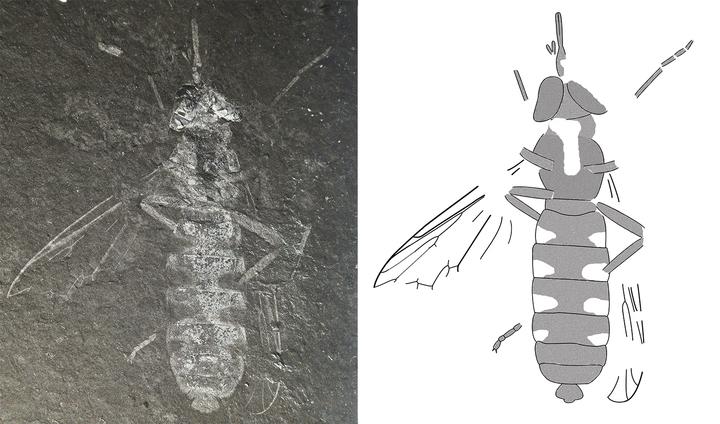
Credit: Alexander Khramov, Gi-Soo Nam.
New species was named Buccinatormyia gangnami, after a famous hit by a South Korean singer PSY. It was described based on six impression fossils found near Jinju city in South Korea. On average, members of this species were twice larger than the common house fly, with a proboscis length up to 5 mm. Their darkish abdomenon were embellished with four pairs of light spots, very similar to yellowjacket patterns which typically displayed by hoverflies and other extant flower-loving Diptera active during the day.
The chief model for modern yellowjacket mimics are social wasps united into the Vespidae family. In our time these wasps as really common as everyone knows who has ever seen them stuck in his or her jam. However, judging by the fossil record, vespid wasps were rare and represented by exclusively solitary taxa in the Early Cretaceous. So probably Buccinatormyia gangnami mimicked something else, or, alternatively, vespid wasps radiated early than currently thought.
Buccinatormyia gangnami belongs to Zhangsolvidae, a dipteran family which prospered during the Early Cretaceous, but then went extinct due to unknown causes. «There were several lineages of long-proboscid flies during the Mesozoic, and all they were initially associated with gymnosperms. Some were managed to survive into our time, while others disappeared, probably due to their inability to adapt themselves to angiosperm-dominated worlds. Why zhangsolvids were destined to lose, we cannot explain yet», said Alexander Khramov, study’s leading author and a senior researcher at the Borissiak Paleontological Institute (Moscow).
###
Media Contact
Alexandr Khramov
[email protected]
Related Journal Article
http://dx.




